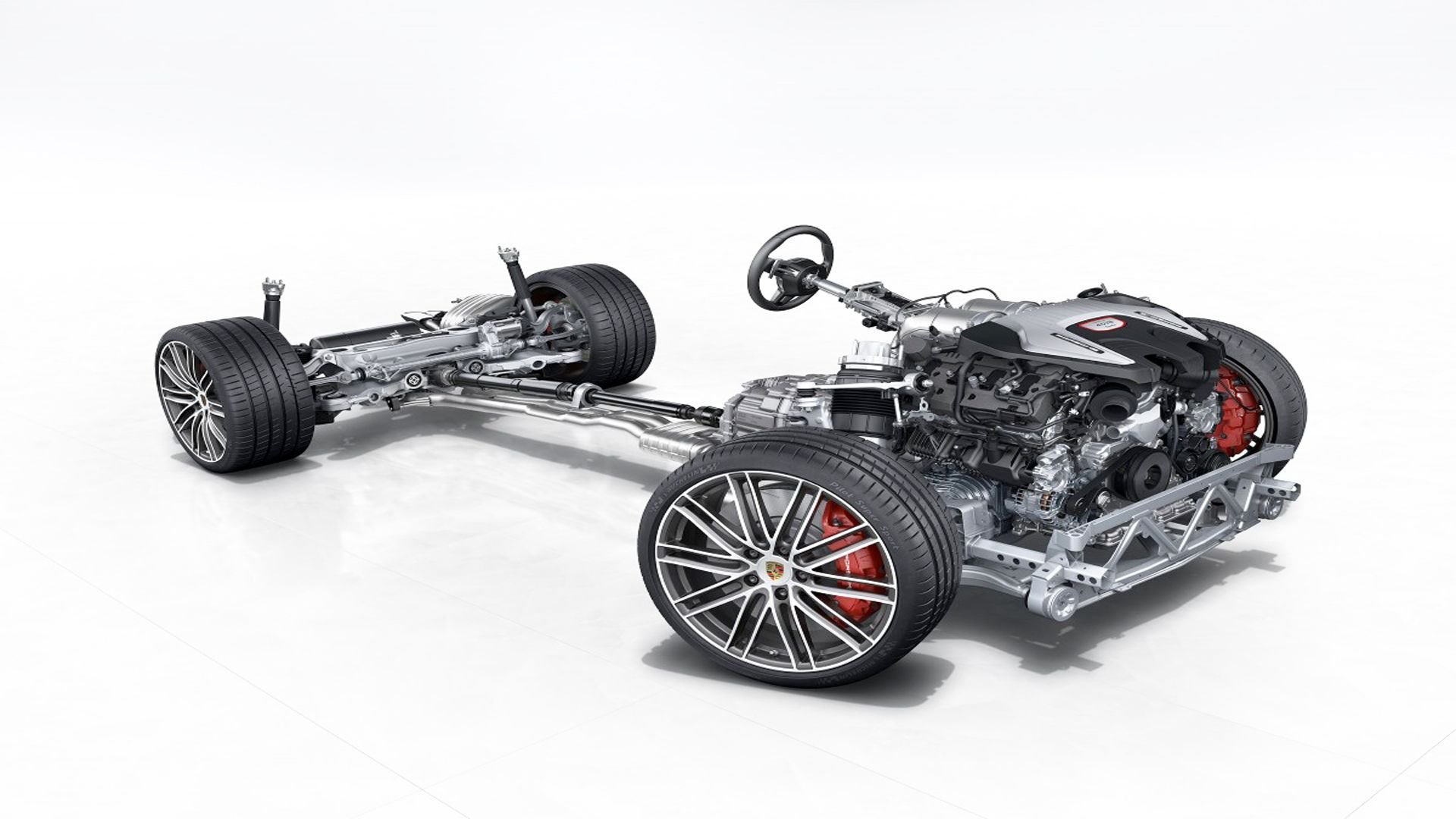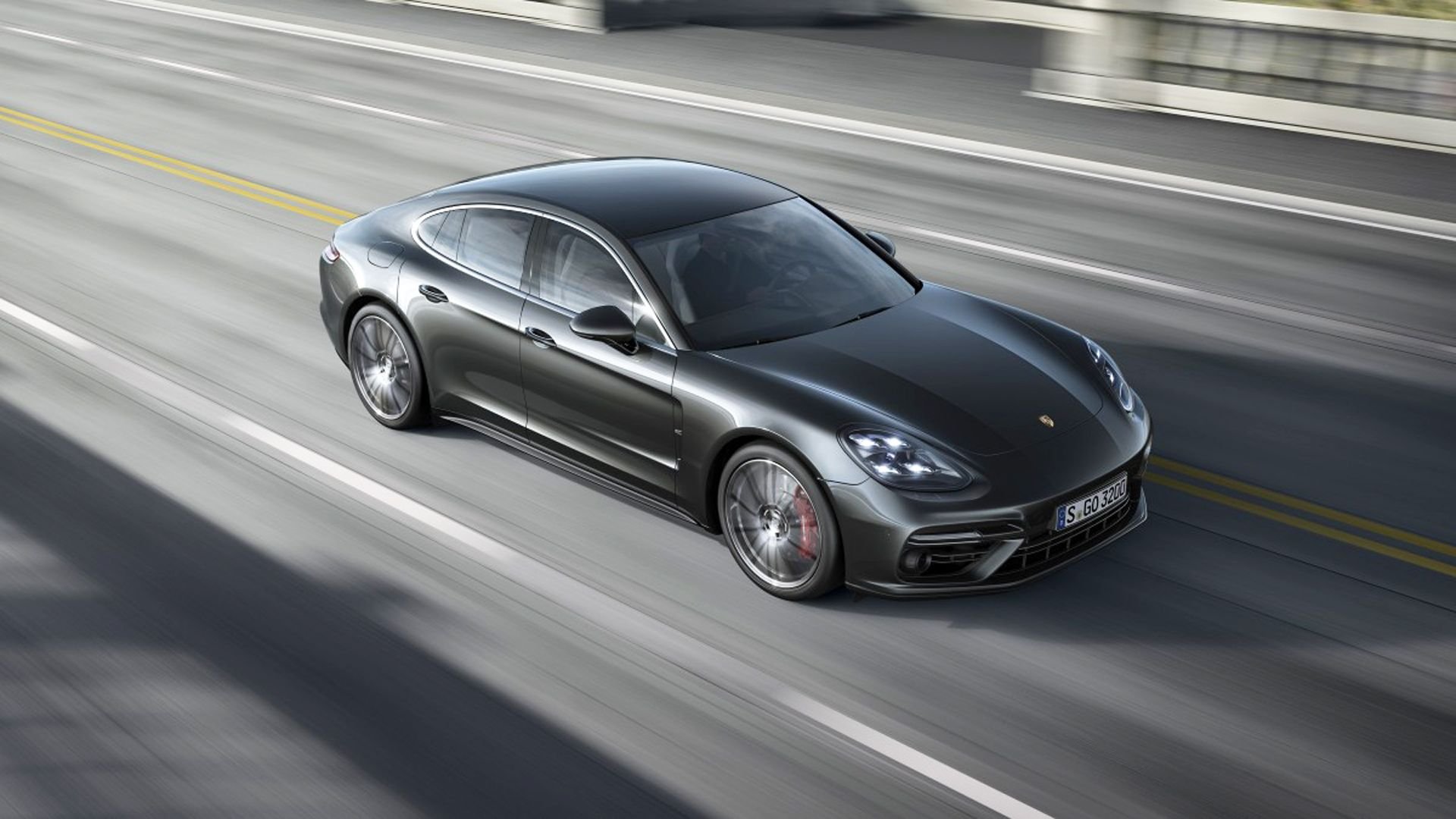7 New Things Happening with the 2017 Panamera
The Panamera has finally gotten over the hump.














1. Engine Options
Porsche knows that the Panamera is a vehicle that will be sought out by many and thusly should be presented with options that will fit into individual needs. With that in mind, Porsche has built three engine choices for the buyer to pick from to power their vehicle.
A 4L V8 biturbo engine with 550 horsepower and 567 pound-feet of torque saying hi to 60 mph in a breathtaking 3.4 seconds, or a couple hairs faster equipped with the Sport Chrono at 3.2. This engine is capable of switching off four cylinders to save on runs to the gas station for re-fillings and becoming close friends with the attendants.
A 4S will have a 2.9-liter twin-turbo V6 with 440 horsepower and 405 pound-feet of torque, making it more than adequate for the normal driver and their commute getting up to 60 in 4 seconds flat. Taking this option of an engine will also save you 275 pounds over the turbo V8 engine, which is a pretty big saving on performance.
A completely new V8 biturbo diesel with 416 horsepower and 627 pound-feet of torque, making the 60 mph trip in 4.5 seconds and 4.3 with the Sport Chrono package, which makes it the most powerful diesel Porsche has ever had. This engine also has the distinction of being the fastest production diesel on the market and thusly will be paired with permanent four-wheel drive.
All of these engines will come paired with the 8 gear DCT. At launch, the Panamera will be available with the V6 4S and the V8 biturbo. The diesel model will come later in the cycle.
2. Drivetrain and Chassis
As previously mentioned, the PDK gearbox has 8 speeds to save on fuel and ease owner life. The top speed is still attainable in the sixth gear.
The new Porsche Dynamic Chassis Control Sport (PDCCS) and Porsche Torque Vectoring Plus (PTV+) pump up the driving dynamics and stability control. PTV+ improves steering response and precision by strategically applying the brakes to one of the rear wheels. When accelerating out of the corners, the stability and grip will improve thanks to the electronically controlled rear differential lock with fully variable torque distribution.
The new Porsche 4D Chassis Control networks all control units for the suspension tat are relevant to the chassis with one another in order to optimize comfort and improve the ride.
3. Exterior
The new Panamera is longer, wider, and taller than its predecessor but you probably can't tell by looking at it. Visually it's much more sleek and taut thanks to the humpless rear that gives the 623 more familiarity with the 911. The vehicle is 198.8 inches long, 76.3 inches wide, and 56 inches tall for those wanting hard numbers to see where the new model is at. The front and rear overhangs have been reduced also to help in hiding the weight gain.
Speaking of the exterior, I would be totally remiss not to mention the gif worthy unfolding of the wing found on the Turbo! The two stage foldout is like something out of an Anime about giant transforming robots fighting in a not too distant future while the fate of humanity hangs in the balance. Check this short video out to see it deploy and then retract during a couple high-speed runs.
4. Interior
The interior has been updated with touch-sensitive controls for the driver and passengers both in the front and rear. Porsche Advanced Cockpit is a welcome minimalist change from the sea of buttons that flooded the console of the previous Panamera.
Buttons weren't the only casualties in the designing of the new Panamera as a good number of gauges didn't make it either. At least physically. There's only one physical gauge inside the Panamera which is a tachometer, that is a nod to Porsche past, sits front and center for the driver and passenger. Then you have dual high res seven-inch displays flanking the lone dial. Then on the center console there is a 12.3-inch touchscreen to keep things at a fingers touch to engage the Porsche Communication Management.
The Panamera offers a 40:20:40 split of the folding rear bench backrests and a luggage capacity of 495 liters that can expand to 1,304 liters with the rear seats folded down.
5. Night Safety
Night Vision Assist lends a helping hand to the driver with information beyond that which could be attained by headlights alone. An infrared camera detects pedestrians or large animals before they even can be in sight by the headlights. A thermal image in the instrument cluster warns the driver of what's approaching. The detected person or animal showing up in yellow or red, and is joined by an alerting tone when the vehicle comes into critical range at the front of the car.
The Night Vision Assist with the Porsche Dynamic Light System Plus will briefly flash the headlight at the pedestrian on the road or just in front of the vehicle in order to help get the driver's attention.
6. Surround View
The Surround View system works with the reverse camera and three other high-res cameras (one in the front, one under each side mirror) to put together a virtual bird's eye view of the car and displays it on the center console screen. You can even switch between the cameras if for some reason you need to check on what is going on outside the vehicle.
7. Rear Seat Entertainment Units
The units are now removable so that you can enjoy them outside the vehicle for mobile fun.
For DIY maintenance, modifications and repair guides, visit our how-to section here.
